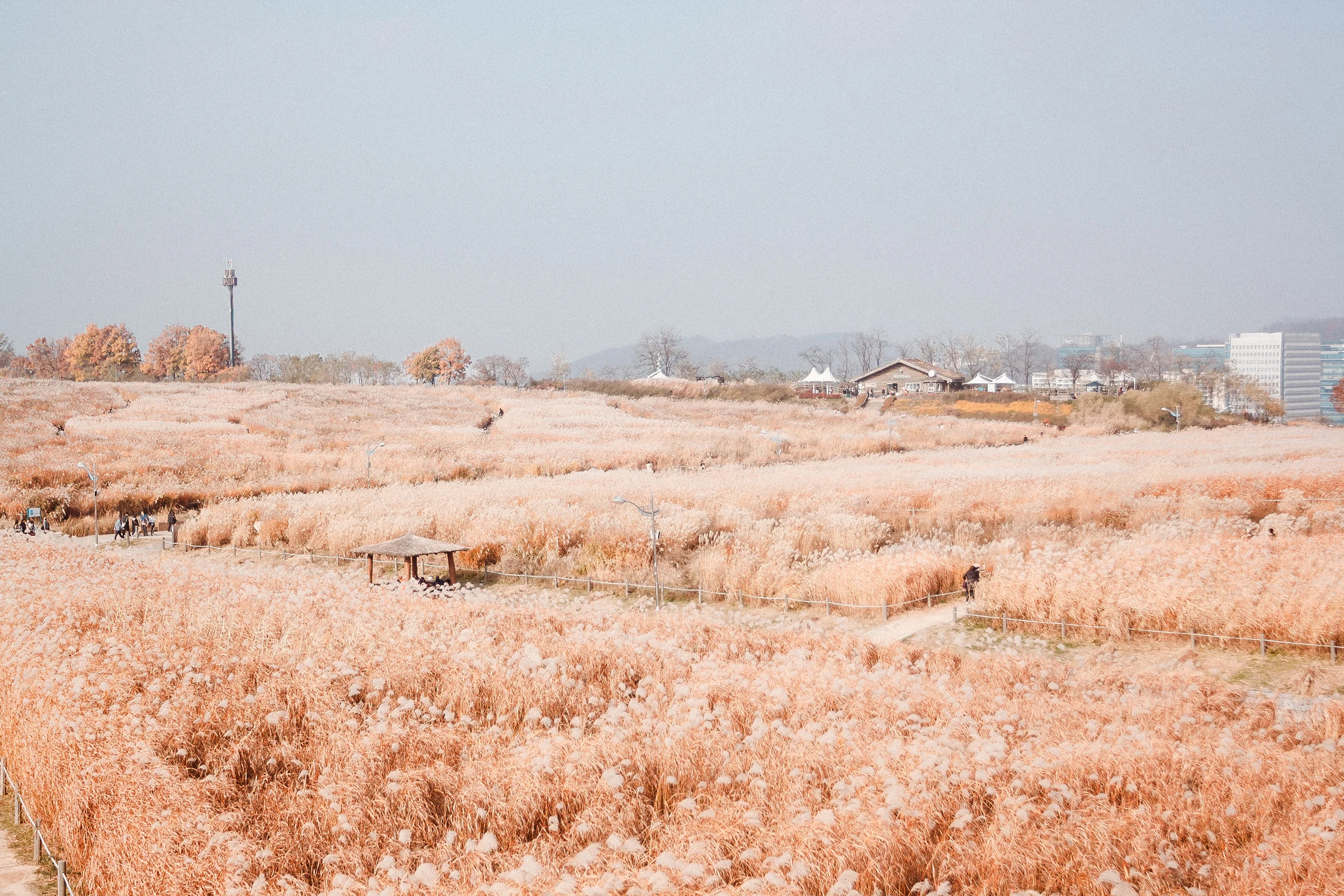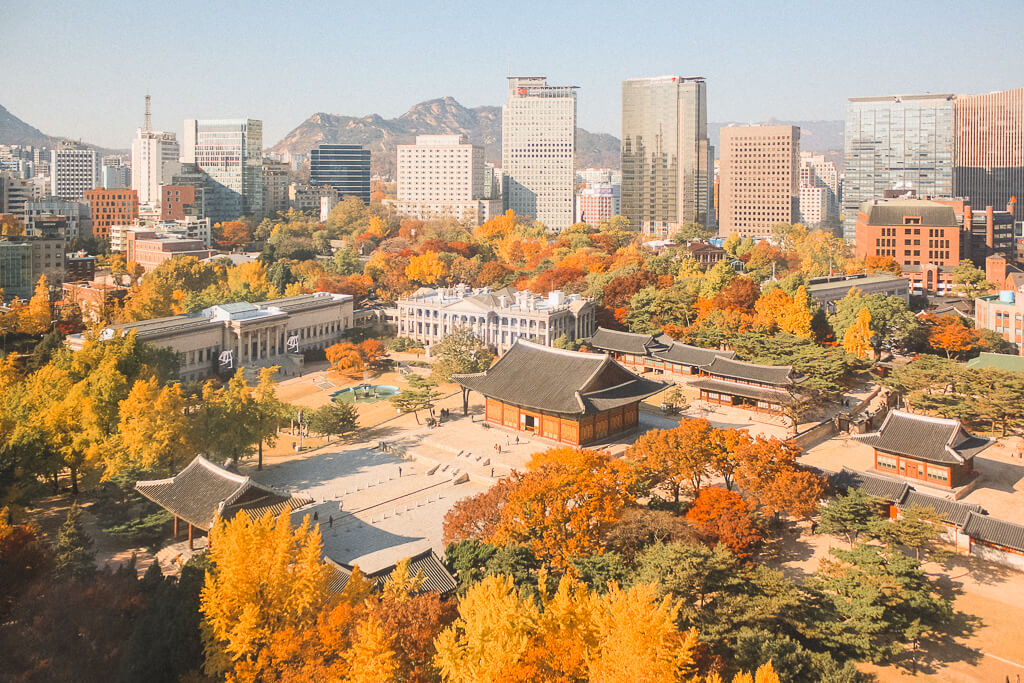Admist the cold harsh temperatures in Seoul during Winter, apart from snuggling under your comforters in bed, the one other option that gives you warmth, is this list. This list of savory must-eat food and desserts in Seoul during Winter is guaranteed to keep you warm and cozy from your belly, even when you are out in the cold.
맛있게 드세요! (“Masitge deuseyo!” means “Have a delicious meal!”)
1. Samgyetang (삼계탕)
Samgyetang, or ginseng chicken soup, is a delicious steaming dish which consists primarily of a whole young chicken stuffed with sticky rice, ginseng, garlic, jujube, chestnuts and pine nuts. Its ginseng-flavoured chicken meat is tender and savory, its broth is rich in flavour, and its sticky rice stuffing infused with chicken and ginseng is so palatable. If this dish doesn’t satisfy your hunger and warm you up, nothing else will do.
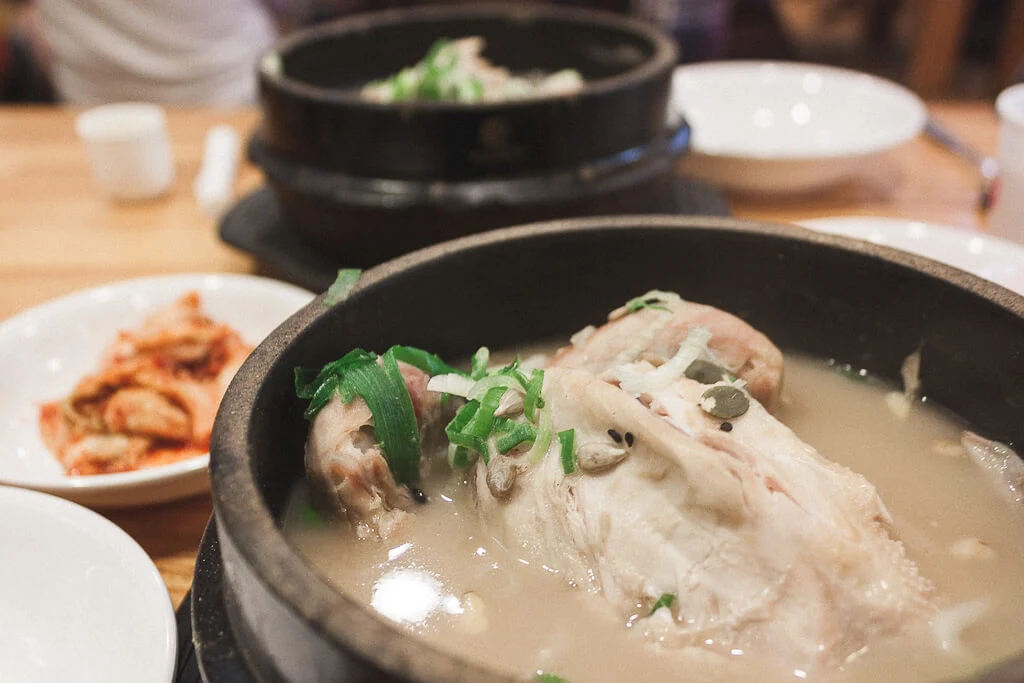
2. Galbitang (갈비탕)
Galbitang, or beef short rib soup, is a healthy, nourishing clear soup made with long hours of stewing beef short ribs along with radish, onion, garlic, ginger and soy sauce. Its succulent short ribs are braised until fork-tender, and its soup is so rich and flavoursome. This hearty and nourishing dish should not be missed!
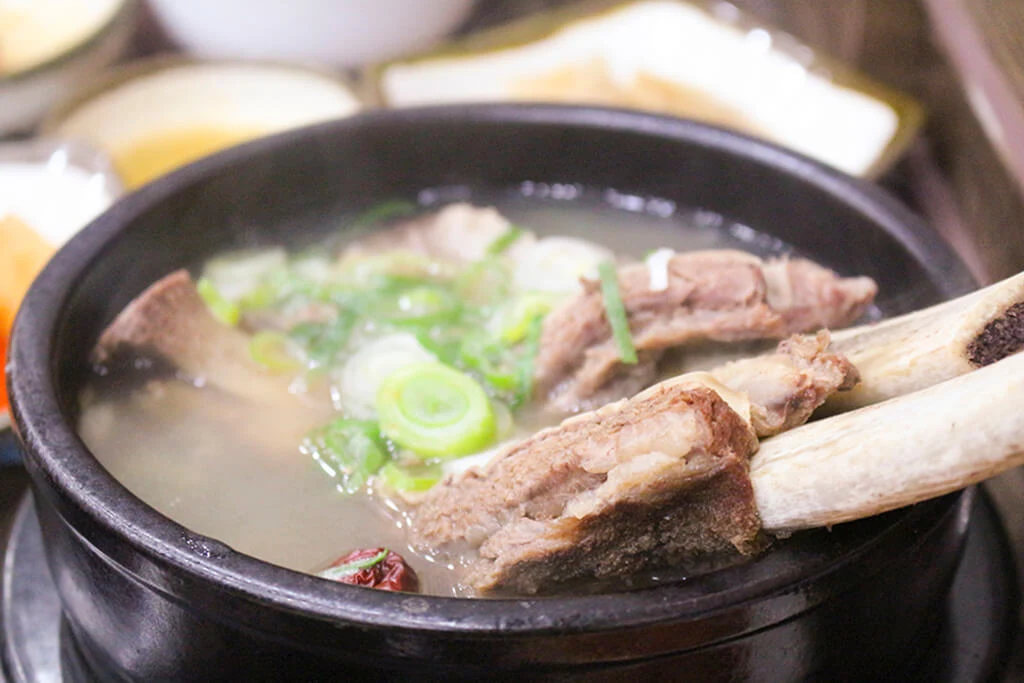
3. Dakhanmari (닭한마리)
Dakhanmari, which literally means “a whole chicken”, is a dish as simple as its name – fresh young chicken boiled with vegetables, potatoes, tteok (rice cake), garlic and some seasoning. Its broth, though clean and mild in taste, is brimming with nourishing sweetness from the chicken. Halfway into the meal, Koreans will typically add on guksu (noodles) or juk (porridge) which will be made with the remaining broth. Rest assured that just a sip of the soup will remind you of Grandma’s cooking.
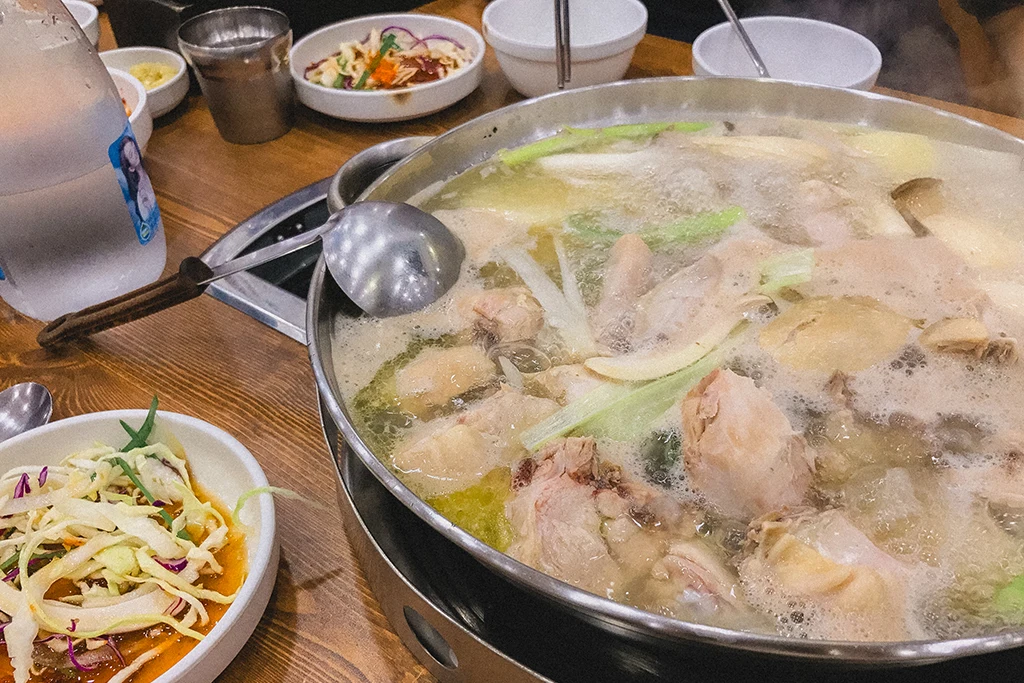
4. Soondubu Jjigae (순두부찌개)
Soondubu jjigae, or spicy tofu stew, is an appetizing spicy dish made with freshly curdled soft tofu, vegetables, mushrooms, gochujang (chili paste), and sometimes seafood or meat or kimchi is added. This stew is often served with a raw egg to be cracked in to the boiling hot stew at the table. This will be one spicy, hearty, invigorating yet comforting meal.
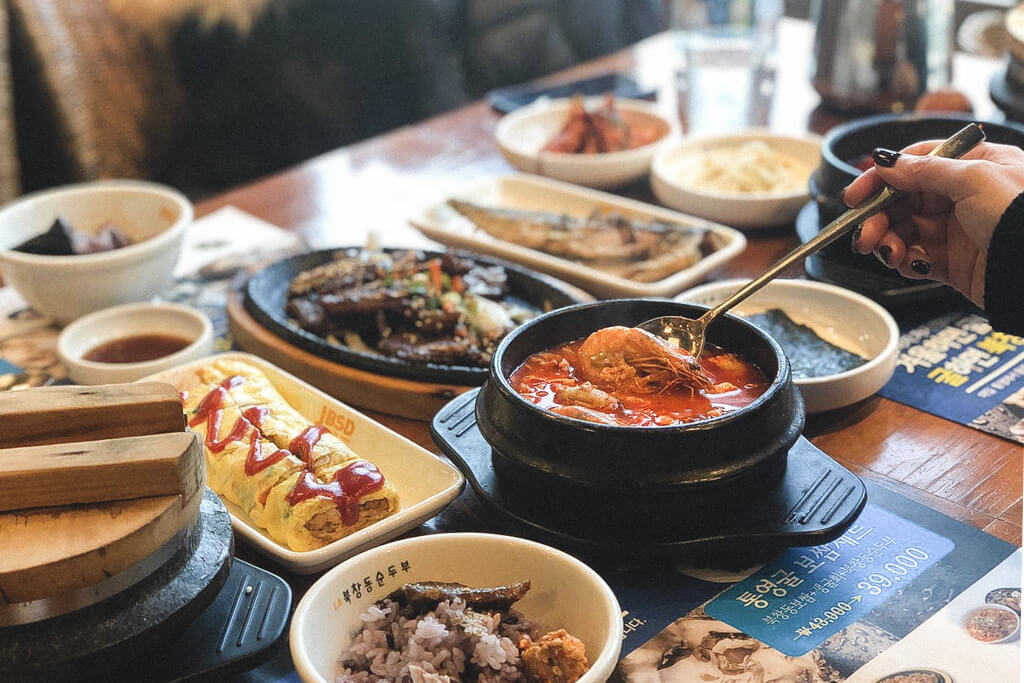
5. Traditional Bulgogi BBQ (옛날불고기)
Yetnal bulgogi, or traditional bulgogi BBQ, as compared to the usual bulgogi, is little bit more soupy with lighter seasoning and more fresh vegetables like mushrooms, onions, and leafy greens. As the marinated marbled beef cooks on the grill, its flavourful juices flow into the broth, sweetening it. Mix some of the soup in with your rice for a spoonful of tasty and flavoursome.
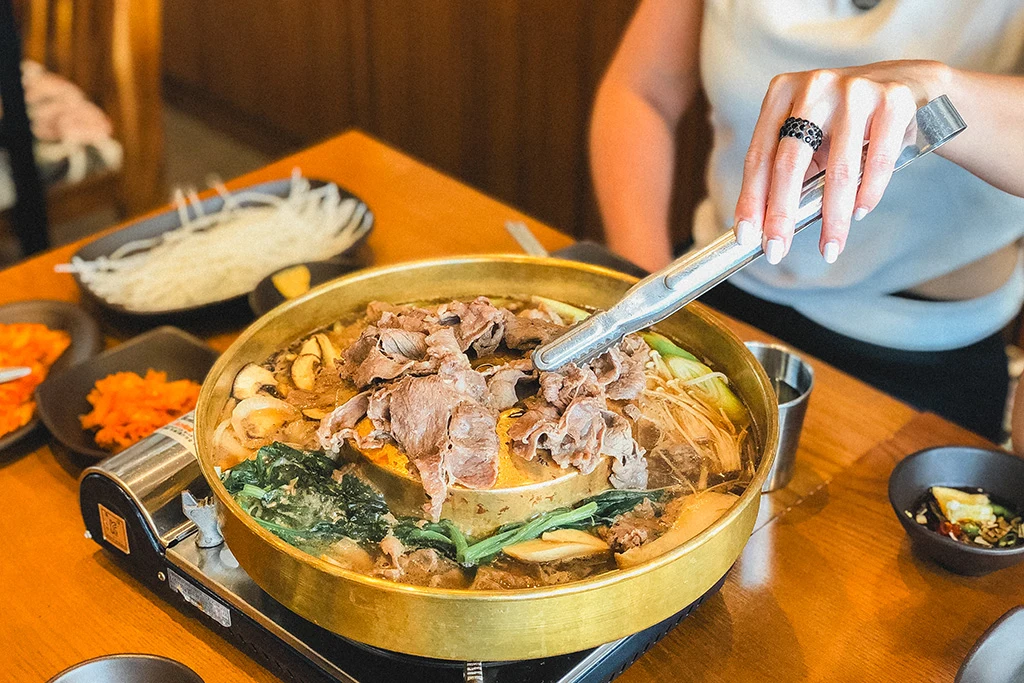
6. Eomuk (어묵)
Eomuk, or skewered fishcake, simmered with radish in a light savory broth is a hugely popular Korean street food, especially during Winter. Though you are standing out in the cold, the hot broth, coupled with tteokbokki (spicy rice cakes), sundae (blood sausage), and twigim (deep-fried food, usually vegetables or seafood), somehow brings you warmth and comfort instantly. A truly inexpensive, snug yet satisfying meal!
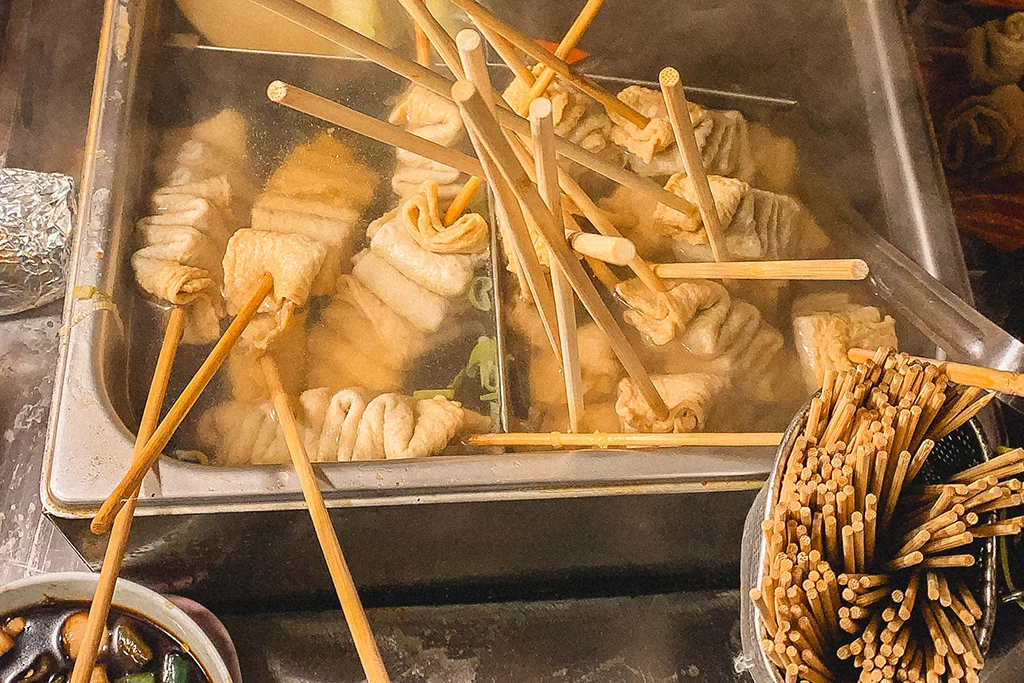
7. Jogae Gui (조개구이)
Seafood is in season during Winter in Korea and in all true Korean style, you get to grill your seafood at your table. There is something primeval yet fascinating about gathering around a fire and grilling food, isn’t it? In most countries, seafood is served cooked but here, it is served fresh. Think grilling fresh scallops, abalone, oysters, clams, prawns and other shellfish at your table. This is one experience you must try!
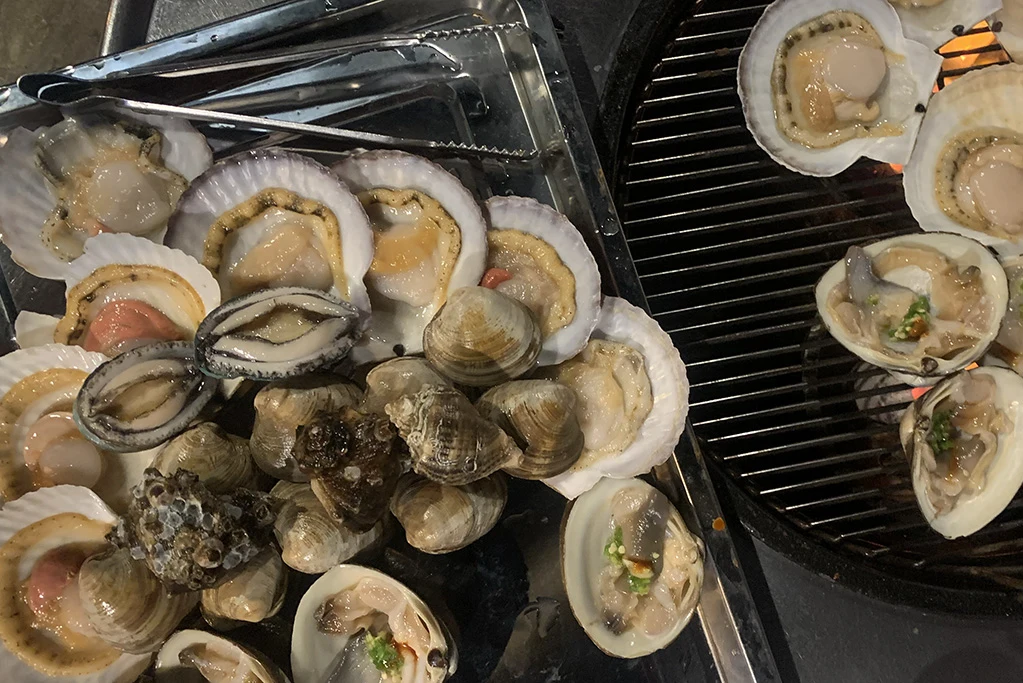
8. Green Tea (녹차) & Everything Else Made From Green Tea
Green tea is one of the traditional teas in Korea and is widely popular among the Koreans. One of the most popular green tea cafes in Korea is O’sulloc Tea House with branches all over Korea. Its wide variety of teas, roll cakes and ice creams is guaranteed to leave you craving for more each time. They even have green tea spreads and green tea scones. Their green tea roll cake filled with vanilla mascarpone cheese cream is highly recommended!
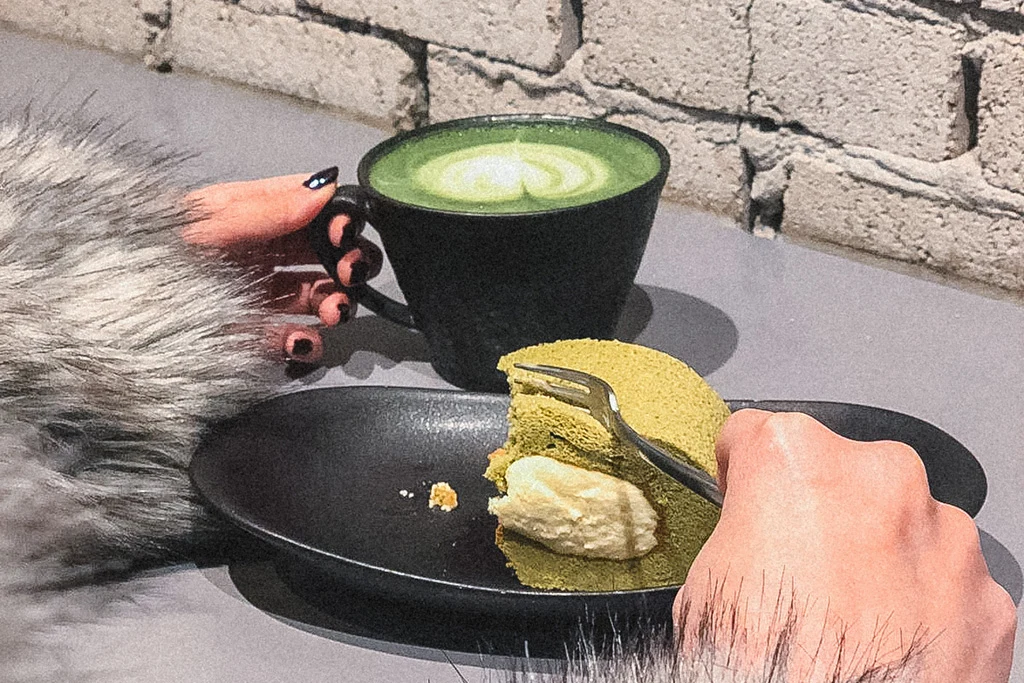
Gajayo’s Tip:
In Korea, patjuk (red bean porridge) is commonly eaten during the winter season, and is associated to Dongji (winter solstice). Patjuk is traditionally made from red beans and served with chewy rice cake balls. Koreans believe that cooking and eating patjuk is also a ritual to prevent bad luck, epidemic disease, and influences from malicious spirits. Indulge and bid farewell to bad luck and evil spirits!
